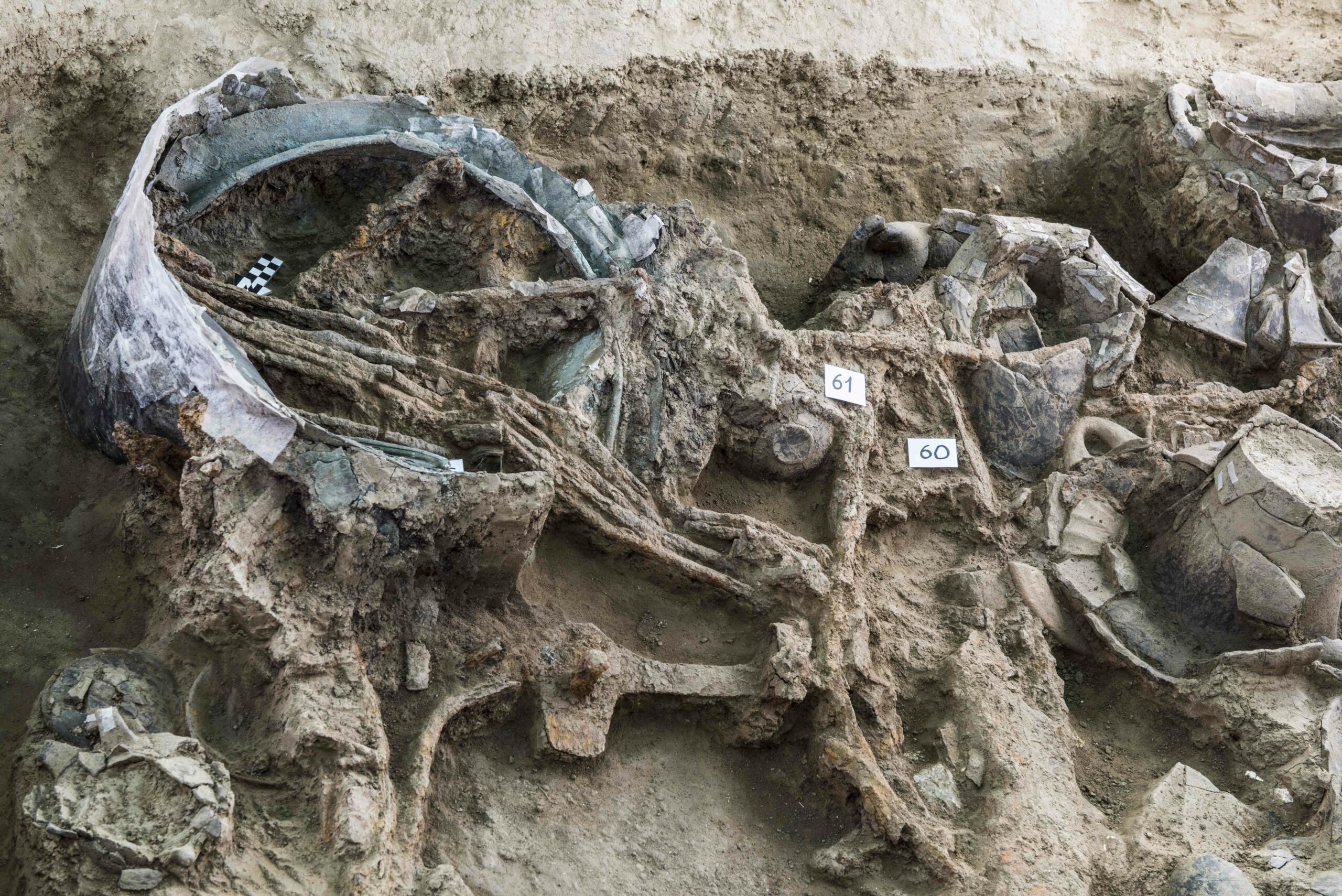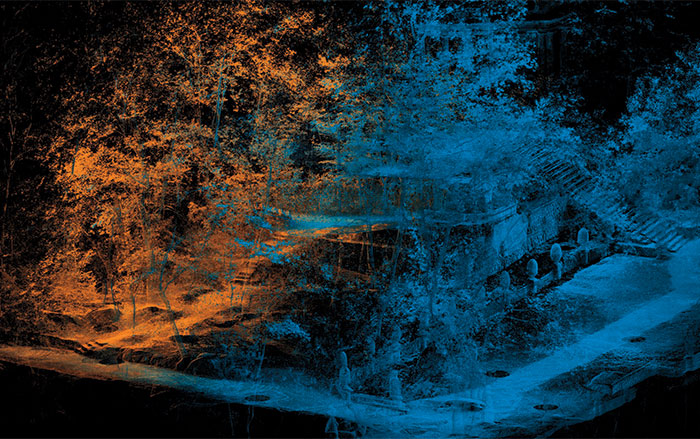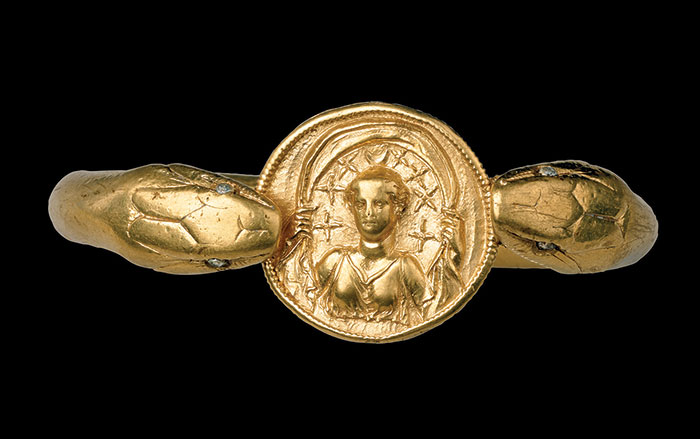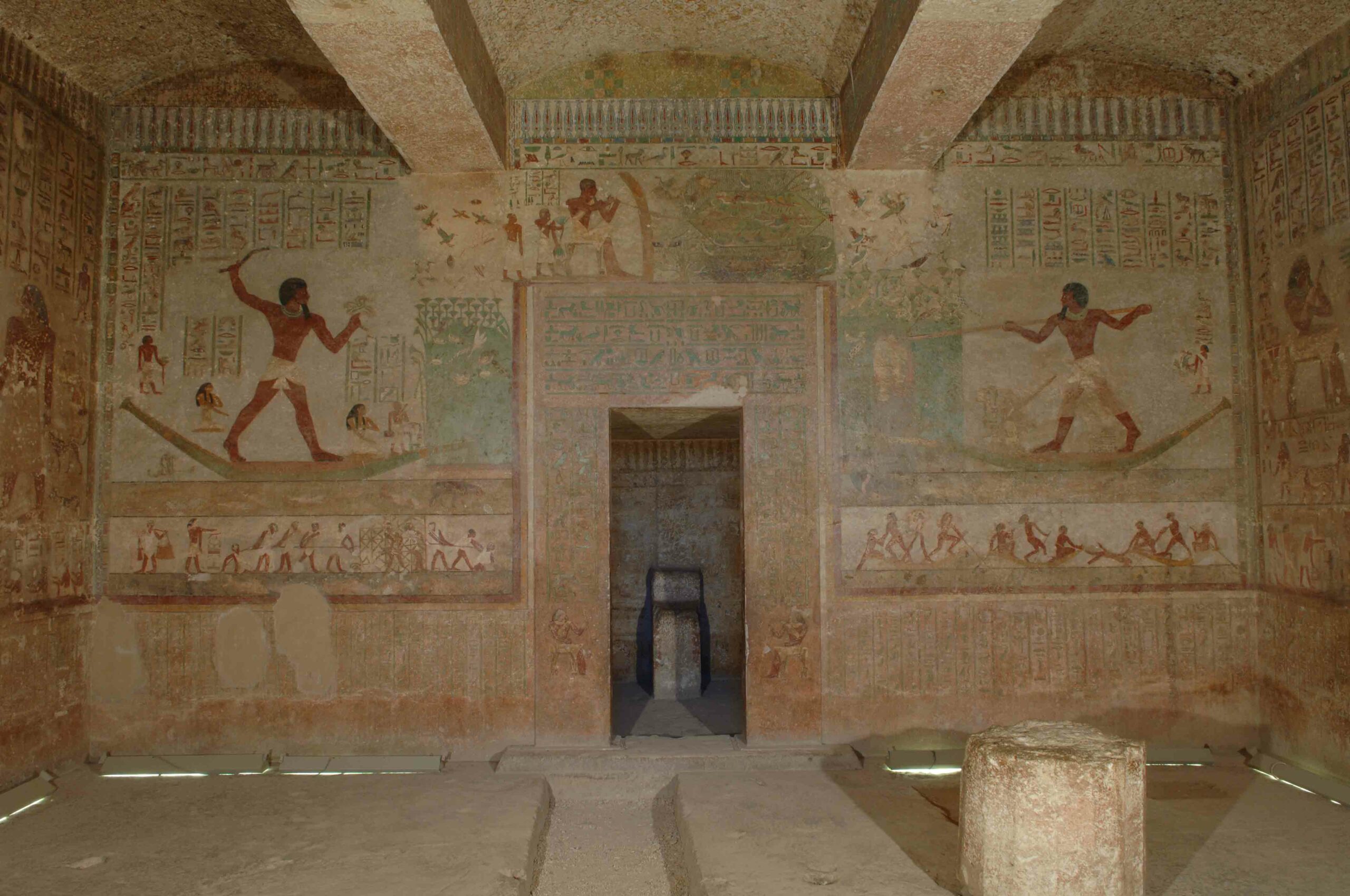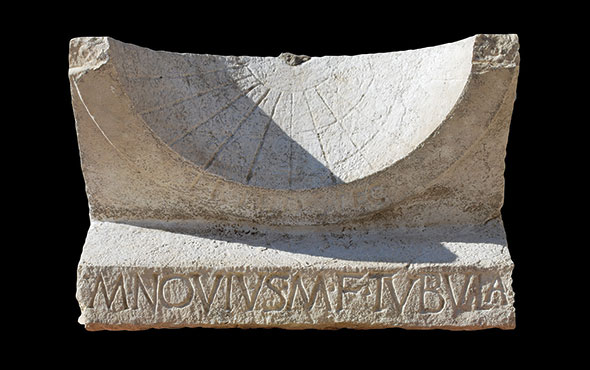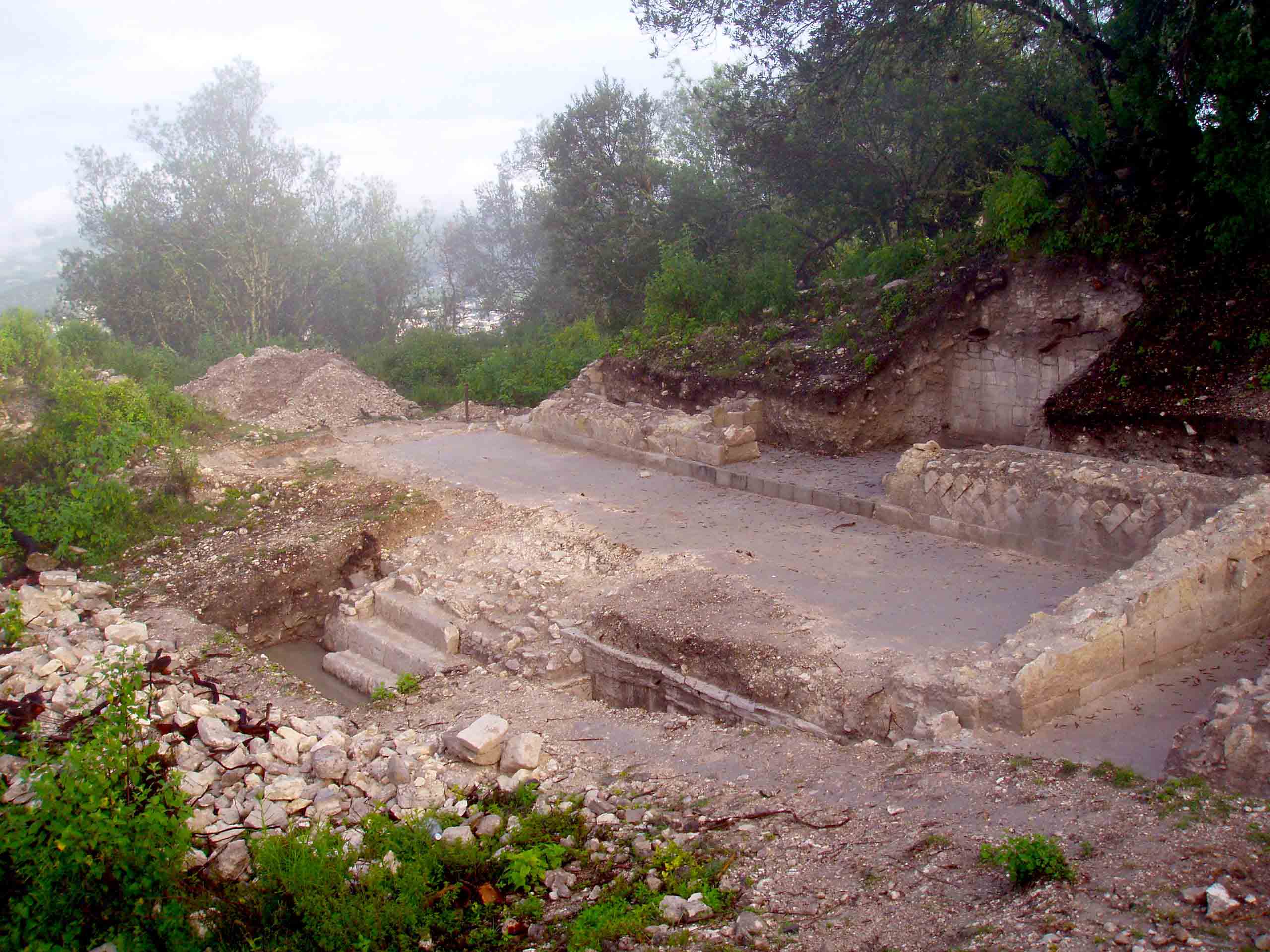
ROME, ITALY—A cache of coins dating to the third century B.C. has been found at the Poggetto Mengarelli necropolis at the Vulci archaeological site, located near the coast of the Tyrrhenian Sea, according to a report in ANSA. The 15 large bronze coins bear images of the god Janus Bifrons on one side and the prow of a boat on the other, representing the passage to the underworld from the world of the living. They are thought to have been stored in a leather bag, and then placed in the burial along with ceramics and an iron tool called a strigil that was used to clean the body. A coin similar to those in the bag was placed near a bronze clasp on the left shoulder of a man who was buried in the tomb. An iron object that may have been a spear was found near his head. The second person buried in the tomb had been cremated, and the remains wrapped in a shroud that had probably been closed with the bronze clasp found nearby. A small circular pyx, or chalice, with a lead cover was discovered in the tomb’s vestibule. To read about the recent discovery of a jar full of bronze coins in Japan, go to “Samurai Nest Egg.”



